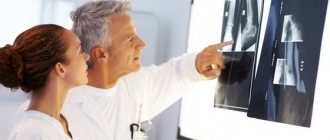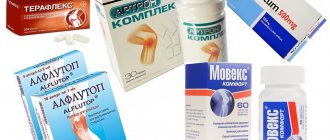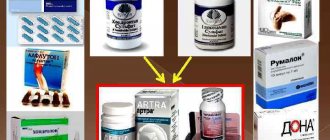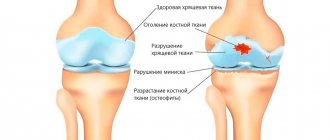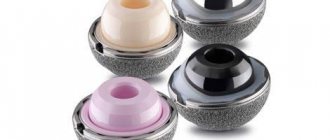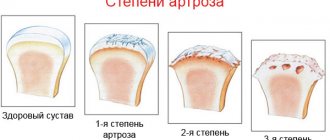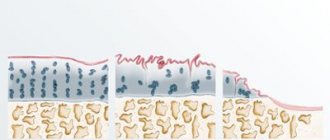Treatment of arthrosis is aimed at solving several problems. It is necessary to eliminate the pain, restore mobility to the joint, and ideally, restore the affected cartilage tissue. For this purpose, drugs of different groups are used, but chondroprotectors are almost always present in the prescriptions. What are these medications and how effective are they for arthrosis and osteoarthritis?
Opinion about the effectiveness of chondroprotectors in medicine is controversial
This term hides a group of drugs whose action is aimed at stimulating and regenerating cartilage tissue. The diagnosis of arthrosis indicates degenerative changes in joint tissues, pain, and limited mobility. Chondroprotectors have the same effect on any joints - knee, hip, hands, feet, spine.
Many components are made from animal products - marine invertebrates and some salmon fish, as well as plants - avocados, legumes. The composition contains two active components:
- Chondroitin.
Normalizes metabolism in cartilage tissue, stimulates the regeneration of cartilage cells, initiates the production of collagen and hyaluronic acid. It has anti-inflammatory properties and also promotes the production of natural synovial fluid.
- Glucosamine.
Relieves inflammation, promotes the production of natural chondroitin, prevents the action of enzymes that destroy hyaluronic acid and collagen, and also performs a number of other functions.
Together or separately?
Traditionally, doctors prescribe chondroprotectors to patients containing both active components. However, recently there have been more and more recommendations to take single drugs, since in combination chondroitin and glucosamine supposedly weaken each other’s effects. It is difficult to say how correct this or that approach is: clinical trials have still not proven the higher effectiveness of single drugs.
Complex or single drugs? The question remains open
Chondroprotectors are produced in the form of:
- tablets, capsules or powder - for oral administration;
- injections - for injections directly into the joint capsule;
- ointments - as an addition to the main treatment.
The choice of drug form depends on the clinical picture of the disease. For the treatment of arthrosis and osteoarthritis, tablet and powder forms are most often prescribed. The average dose is 1000-1500 mg of active substance daily. If the disease has progressed to the second or third stage, it is more effective to give injections, reducing the dose of the active substance.
Comparison of addiction in Dona and Arthra
Like safety, addiction also involves many factors that must be considered when evaluating a drug.
So, the totality of the values of such parameters as “syndrome” in Dona is quite similar to the similar values in Arthra. Withdrawal syndrome is a pathological condition that occurs after the cessation of intake of addictive or dependent substances into the body. And resistance is understood as initial immunity to a drug; in this it differs from addiction, when immunity to a drug develops over a certain period of time. The presence of resistance can only be stated if an attempt has been made to increase the dose of the drug to the maximum possible. At the same time, in Dona the meaning of the “syndrome” is quite small, however, the same as in Arthra.
When can I expect results?
It is necessary to take tablets or capsules for at least four months - only after this period the first effect appears. Optimal results are achieved after approximately 7 months of use. The medicine is used continuously and in large quantities, since chondroitin is characterized by rapid absorption.
The effect of the injections occurs faster - after approximately one course of 20 injections. However, even after this, the patient must continue taking the pills and continue to give injections - in a lower dosage. Ointments are prescribed during remission as an adjuvant - you should not expect results from them.
The effect of taking chondroprotectors occurs within a few months
Patient reviews
Elena, 55 years old, Yaroslavl: “About 2 years ago I started having problems with my joints. After physical activity, pain in the legs began to appear, which quickly passed. Then the pain intensified and I began to limp. I used various ointments and gels, but their effect was so short-lived that I abandoned them. The doctor recommended the drug Artra, which I took for six months. After completing the course of treatment, the pain decreased and the joint stopped crunching. I tolerated the medication well. I’ll start another course of treatment soon.”
Dmitry, 60 years old, Tver: “I worked all my life in hazardous industries and often unloaded wagons at night. All this had a negative impact on the joints - cartilage tissue began to gradually deteriorate, and friction between the bones in the lower extremities began to increase. Severe pain appeared. The doctor prescribed Dona, which must be taken in three courses over a year. As a result, the pain has decreased and I can easily climb stairs. But such an unpleasant moment arose as intestinal upset.”
We recommend reading: Ibuprofen or Diclofenac: which is better?
Are there any contraindications?
There are not many contraindications to taking chondroprotectors, but they do exist:
- pregnancy and lactation;
- severe renal failure;
- serious gastrointestinal diseases (in this case, injections are possible);
- bleeding disorders;
- individual sensitivity to active components;
- advanced stages of arthrosis.
Chondroprotectors are effective in the initial stages of arthrosis
Division of chondroprotectors into groups according to composition
| Group | Active substance | Examples of drugs |
| 1 | chondroitin sulfate | Chondroxide, Mucosad, Chondroitin Sulfate, Structum, Chondrolone |
| 2 | substances of animal origin extracted from fish cartilage tissue | Rumalon, Alflutop |
| 3 | mucopolysaccharides | Arteparon |
| 4 | glucosamine | Dona, Elbona, Artron-flex |
| 5 | complex preparations: chondroitin, glucosamine, supplements | Teraflex, Artra, Artron-complex, Formula-S, Artrodar |
Disadvantages of treating arthrosis with chondroprotectors
- A long course of treatment, involving regular use of medications in large doses.
- Considerable financial investments in medicines.
- Long period before the effect occurs.
- It is impossible to cure arthrosis in an advanced stage.
- Allergic reaction to particles of animal or plant components.
Treating arthrosis with chondroprotectors is long and expensive
More and more experts classify chondroprotectors as drugs of unproven effectiveness. Why are they considered ineffective and do they actually restore joints?
Comparison of the effectiveness of Dona and Artra
The effectiveness of Dona is quite similar to Artra - this means that the ability of the medicinal substance to provide the maximum possible effect is similar.
For example, if the therapeutic effect of Dona is more pronounced, then using Artra even in large doses will not achieve this effect.
Also, the speed of therapy - an indicator of the speed of therapeutic action - is approximately the same for Dona and Artra. And bioavailability, that is, the amount of a drug reaching its site of action in the body, is similar. The higher the bioavailability, the less it will be lost during absorption and use by the body.
Is there an alternative?
Instead of taking medications for a long time, which, moreover, can cause allergies or give no results at all, you can take a simpler route. The method of intra-articular injection of synovial fluid endoprostheses has long been successfully used in European countries. Orthopedists and other specialized specialists recommend that patients with grade 1-3 arthrosis regularly, once every year and a half, undergo courses of such injections in order to stop constantly taking medications.
Synthetic viscoprosthesis "Noltrex":
- helps cope with arthrosis even in advanced stages;
- does not require long-term use - 2-4 injections at intervals of a week are enough to restore mobility to the joint and relieve pain;
- brings effect after the first or second injection;
- does not cause allergies, since it does not contain components of animal origin;
- has virtually no contraindications, with the exception of the inflammatory process in the joint.
The effect of artificial viscoprosthesis is somewhat different from that of chondroprotectors. Noltrex restores the viscosity of natural synovial fluid, as a result of which friction of articular cartilage stops, pain and inflammation go away. Chondroprotectors improve the condition of cartilage tissue, but much more slowly and require consistency and patience from the patient.
Many patients choose chondroprotectors because they are simply not aware of this innovative method of treating osteoarthritis of the hip, knee or elbow. Those who have received complete information about the advantages and disadvantages of each method choose intra-articular injections to return to their normal lives without pain and restrictions in a short time.
Characteristics of drugs
To choose the right chondroprotector, you need to know what characteristics Arthra and Dona have.
Artra
This is a combined drug from the group of cartilage and bone tissue reparants, which is used to treat degenerative diseases of the spine and joints. Its active components are sodium chondroitin sulfate (500 mg) and glucosamine (500 mg). The dosage form of the drug is white tablets.
The active ingredients have the following effects:
- reduce the severity of degenerative changes and accelerate metabolic processes;
- stimulate regeneration and restoration of the cartilage surface;
- activate the production of synovial fluid, which improves joint mobility;
- reduce pain and relieve inflammation;
- normalize metabolism in cartilage tissues;
- accelerate the exchange of phosphorus and calcium;
- block free radicals and enzymes that destroy cartilage structure;
- prevent compression of connective tissue;
- restore the joint capsule;
- slow down the rate of development of osteoarthritis and alleviate its symptoms;
- inhibit bone destruction.
To restore the elasticity of cartilage tissue, doctors prescribe Artra or Dona.
Indications for use:
- rheumatic, post-traumatic, deforming osteoarthritis;
- pain syndrome arising due to degenerative changes in the joints and diseases of the musculoskeletal system;
- osteocondritis of the spine;
- chronic osteoarthritis;
- spondyloarthrosis;
- various local osteopathies;
- bone and joint infections;
- age-related deformation of the musculoskeletal system.
Contraindications include:
- hypersensitivity to the components of the drug;
- pregnancy;
- breast-feeding;
- severe diseases of the urinary system;
- children under 15 years of age.
The medication should be used with caution by people who suffer from bronchial asthma, diabetes mellitus, and those prone to various bleedings.
Adverse reactions include:
- insomnia;
- swelling of the lower extremities;
- headache;
- dizziness;
- constipation or diarrhea;
- increased gas formation, bloating and abdominal pain;
- tachycardia;
- allergic reactions - itching, redness, rashes.
We recommend reading: Morphine and Codeine: which is better?
Artra can cause insomnia.
If side effects develop, the dosage of the medication is reduced by 2 times. If there is no improvement, stop taking the drug.
Don
This is a drug that regulates metabolism in cartilage tissue. The main component is glucosamine sulfate, which is a natural substance present in the body and is responsible for metabolic processes in cartilage tissue. Dosage forms of the drug - capsules, powder, injection solution.
Dona is characterized by pronounced analgesic and anti-inflammatory properties. With regular use of the medication, the amount of glucosamine increases, joint fluid is replenished, and cartilage tissue is restored. Patients note that the affected joint begins to function normally and pain decreases.
Indications for use:
- osteoarthritis of various localizations (wrist, hip, knee arthrosis, osteochondrosis, spondyloarthrosis, etc.);
- chondromalacia patella;
- scapulohumeral periarteritis;
- arthrosis of the intervertebral space.
Contraindications:
- individual intolerance to components;
- pregnancy;
- breastfeeding period;
- children under 12 years of age;
- renal and liver failure;
- severe damage to the kidneys and liver.
If the dose recommended by the doctor is strictly followed, no negative reactions of the body will occur. If it is exceeded, the following side reactions are observed:
- nausea, pain in the stomach, increased gas formation in the intestines, abnormal stool;
- itching, redness of the skin, burning, rash;
- dizziness, numbness of fingertips, tremor of extremities, apathy, lethargy, drowsiness;
- heart rhythm disturbance, tachycardia.
Dona is used for chondromalacia of the patella.
